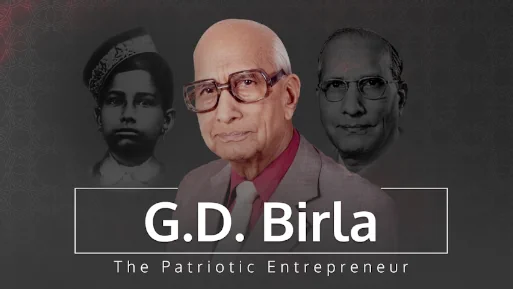New assets bring new trials
28 September, 2012 | The Hindu Business Line
ShareVinay Kamath
28 September 2012
The Hindu Business Line
Dr. Santrupt Misra, HR head of Aditya Birla Group, talks about the challenges that come with speedy expansion and a growing employee base.
 It’s a Saturday morning and Dr. Santrupt Misra, CEO, Carbon Black Business and Director, Group Human Resources of the Aditya Birla Group, relaxes at a resort hotel in Mamallapuram after delivering a stimulating lecture to students of the Great Lakes Institute of Management near the temple town.
In the 17 years Misra has been with the Group, it has grown from a company with a turnover of $1.6 billion to $40 billion, shed ten businesses, acquired 26 and has 1.36 lakh people on its rolls today, up from 70,000. “Productivity has gone up significantly,” says Misra.
It’s a Saturday morning and Dr. Santrupt Misra, CEO, Carbon Black Business and Director, Group Human Resources of the Aditya Birla Group, relaxes at a resort hotel in Mamallapuram after delivering a stimulating lecture to students of the Great Lakes Institute of Management near the temple town.
In the 17 years Misra has been with the Group, it has grown from a company with a turnover of $1.6 billion to $40 billion, shed ten businesses, acquired 26 and has 1.36 lakh people on its rolls today, up from 70,000. “Productivity has gone up significantly,” says Misra.
Misra, who has worked with the J. K. Group, the Tata Institute of Social Sciences and Unilever, has over 26 years of experience in education, training, consulting and Executive development. He has two PhDs, one from India and the other from the Aston Business School, UK, in public administration and industrial relations, respectively.
Misra spoke to Business Line on the HR challenge the group faced in integrating so many companies that it acquired along the way.
The Aditya Birla group has made so many acquisitions in different sectors over the year. How do you manage the HR challenge in integrating companies into the group?
The acquisition and integration issues of each company are distinctive and call for different approaches. Some of the acquisitions form a different part of the value chain. For example, in carbon black we were in the same business (as the acquired firms) but Columbian Chemicals had no footprint in India and we did not have a presence in South America and North America. So it was a perfect match.
Each acquisition needs to be independently and thoroughly thought through. For instance: What is the strategic logic? Integration of what and in what manner would make sense in a particular acquisition?
The integration of Madura Garments and Pantaloon can take various forms. It will be decided closer to the time and we will do what is optimum for the companies.
Take another example. We acquired Transworks from a venture capital firm. Later we acquired Minacs, both BPOs. Both were acquired in quick succession. But the integration issues were different.
Finally, it depends on the logic. To start with, they will be kept as separate companies. But how fast you bring them as one legal entity is a different cup of tea. It depends on the business. For example, Novelis remains a subsidiary but Indal, another acquired company, was merged with Hindalco.
A lot rests on the strategic logic as to what is the nature of the business, the issues, the size of the company, its stage of growth, and so on. There are a host of factors which we take into account - What are we trying to achieve? How is it best achieved? What do we integrate really? At times you have to rationalise the entire organisational structure.
Whenever it happens, how will you integrate Madura Fashions and Pantaloons? One is a high-end brand and the other more mid-market?
In this case, perhaps, it would be how do you integrate certain things at the back-end and front-end. And, in between, perhaps you can keep it independent. Or you can merge the two operations and say this is the value segment, this is the premium segment and the organisation is different. There are so many ways to cut the cake.
During integration do you face surprises, which you didn’t know when you acquired a company?
While you do a due diligence, the deeper understanding about the business that you acquire takes a little longer time. After you comprehend it, then we can decide on integration. You can’t prefix the idea. There is a discovery phase. And you need to have the patience to go through with it, if you want to make it successful.
Along the way you increased productivity, you are generating more with a lesser workforce; what have you done?
There are a whole range of things, not just one. For example, you use a lot of outsourcing agencies where services earlier were not available, now they are available as India has grown. Where things were independent, as we restructured, we brought them together because the opportunity to eliminate certain costs were there. So, I think a combination of technology restructuring, business rationalisation, availing of opportunity of outsourcing, learning to do things better, job evaluation and organisational restructuring - all of these enabled us over a period of time to keep on refining the what, how and why of doing things.
Do you have inter-company movement of people?
Lots of them, all the time.
The group has had several corporate campaigns to reinforce the Aditya Birla group concept. Have they helped?
Aditya Birla group campaigns always worked very well because people have noticed it, liked it. It has c;reated significant awareness among the masses because what happens in our case is we are not a pure consumer products company. We have a number of B2B businesses as well. So in a lot of such businesses people don’t recognise us easily unless the brand itself is highlighted. So the Group campaign from time to time helps, besides, of course the media reportage and cover stories.
I guess it helps in the employment market as well?
Absolutely. The corporate brand and the employer brand are inextricably linked. It can enable the employer brand through recognition. But beyond that the experience of people, other workplaces, kind of determines what the brand stands for. So from a recognition point of view, the corporate brand is important for an employer but a real employer brand is made when you have the right people, the way you train them and the opportunities you give them. Then, do they add value to themselves, do they feel cared for, do they find time for their family and other passions, do they feel a sense of security, is their job challenging, is the culture something which they feel excited about - all of these determine the true employer brand. So, our focus internally on HR is more on elevating the quality of experience.
How many businesses are you in altogether today? How many people do you employ externally today?
We operate in 15 businesses. We have nearly 45,000 employees outside India. Over the years the numbers have grown. Our revenue has grown. More than 53 per cent of our revenue comes from our global operations.
So, you’re a true MNC?
Geographic spread, revenue, customers, markets, spread of operations, way of doing things, diversity of leadership, in every sense we are a multinational.
The AV Birla group was an MNC before it became fashionable to speak of it. But we were a regional multinational so to speak, established in Asia mostly. Today, we are truly multinational. We may not be present in a 100 countries. The intensity of being a multinational, to my mind, is not about how many countries you are in, but how do you operate, what are your thought processes, how do you see the expanse of the organisation, who are your customers. These aspects determine the depth of your multinational character. I can sell my product in 200 countries but selling in 200 countries through agents doesn’t make me a multinational.
The diversity of your work force, your relative multiple cultures, the regulatory environment, your physical presence there, the way you support global and local customers, the manner in which you c;reate value in different contexts, yet remain one single entity, known for its excellence right across the world, that’s being multinational.






